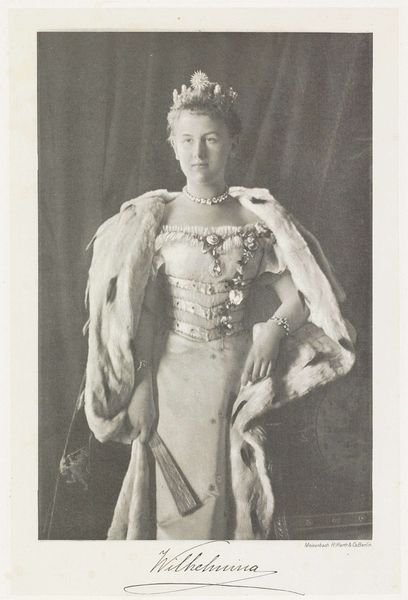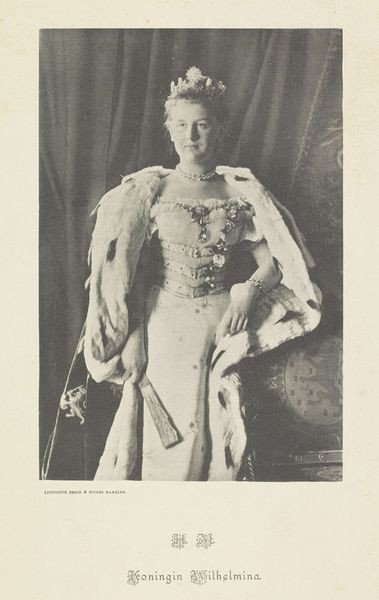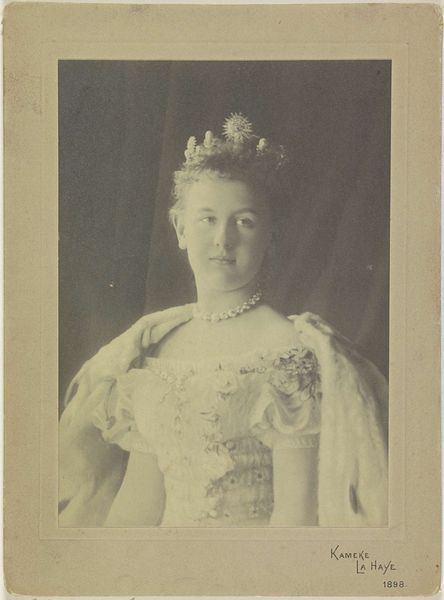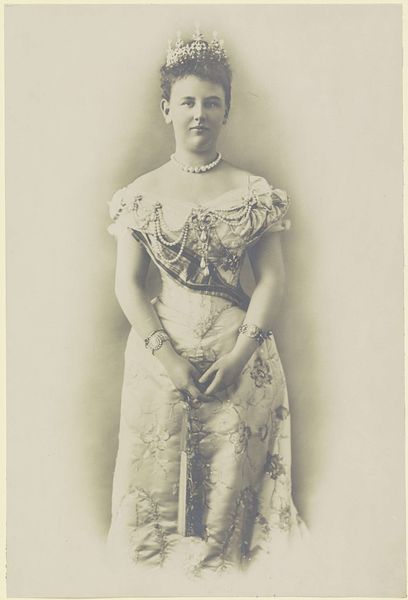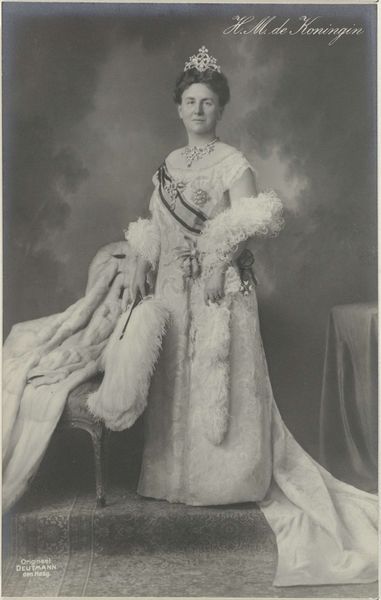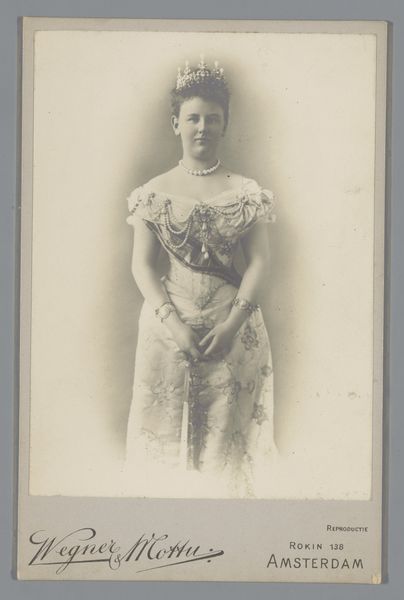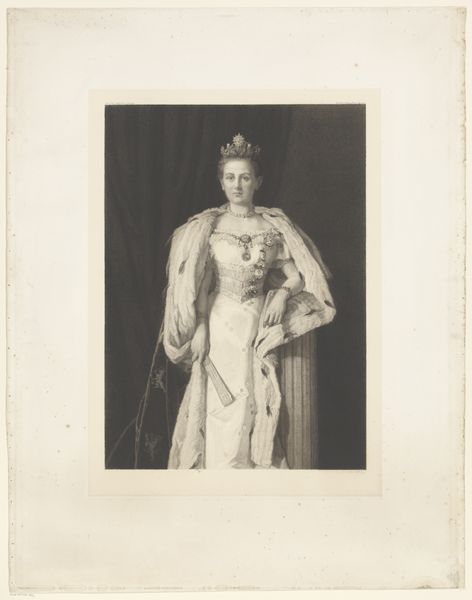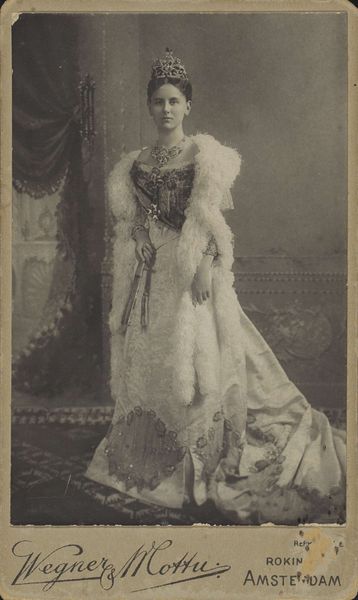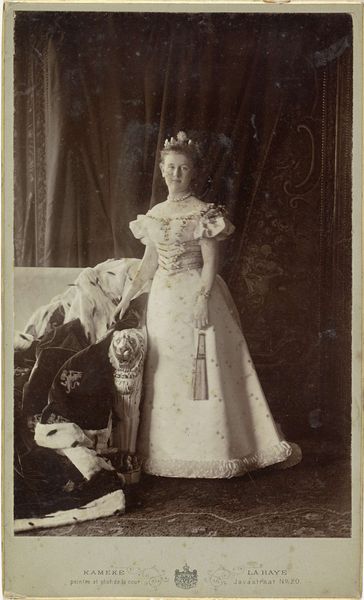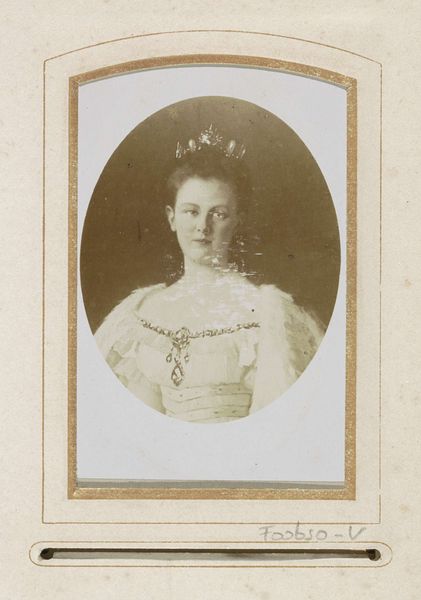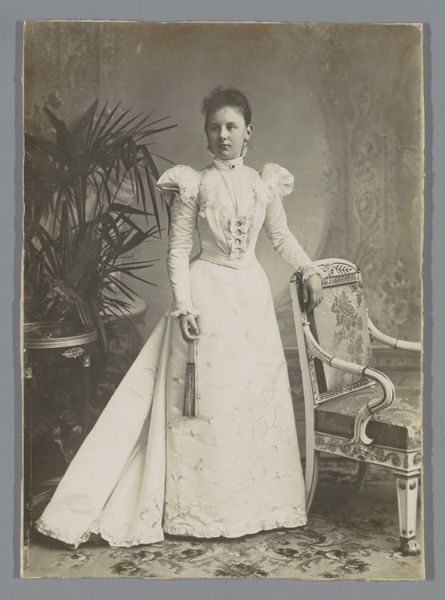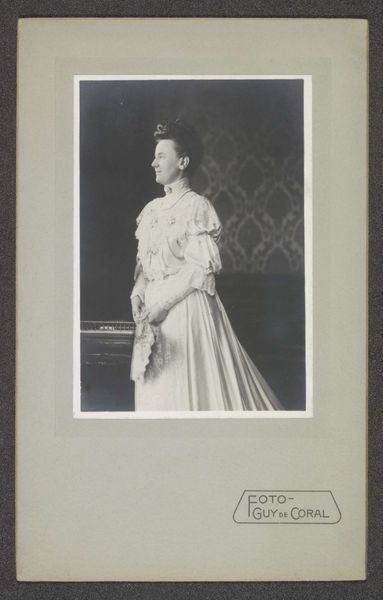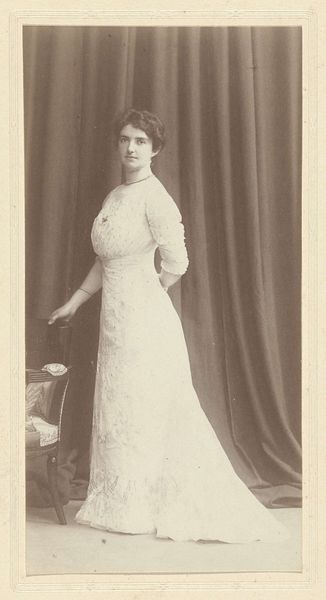
#
photo of handprinted image
#
aged paper
#
pale palette
#
pastel soft colours
#
muted colour palette
#
photo restoration
#
light coloured
#
white palette
#
unrealistic statue
#
framed image
Dimensions: height 164 mm, width 107 mm
Copyright: Rijks Museum: Open Domain
Curator: This is a portrait of Queen Wilhelmina, likely from 1897, found here at the Rijksmuseum. Editor: The immediate feeling is one of almost oppressive formality. It’s all very light and washed out – white dress, pale skin, set against an indistinct dark background. The overwhelming softness, combined with the severe posture, creates an intriguing tension. Curator: The photographer, Kameke, has really manipulated light and shadow to emphasize Wilhelmina's regality, hasn't she? There’s a clear hierarchy of light, focusing our attention on the symbols of power: the crown, the fur stole, the jewels. We could look at this through the lens of photographic structuralism. Consider how each of those carefully chosen elements works in conjunction to represent 'Queen'. Editor: While light is key, I find myself asking how this image was circulated? What impact did these displays of untouchable power have on a populace dealing with widespread poverty? Or perhaps considering, too, the Dutch colonial exploits in Indonesia at this very moment. Was she, or wasn't she, perceived to embody an ongoing legacy of extraction and power hoarding? Curator: The semiotic analysis provides access here: consider, though, her youth; at the time she had just come of age to ascend the throne, and the visual choices made do much to compensate for youth with iconography. The photographer also does a wonderful job of creating geometric forms: the circularity of the jewels, the verticality of the dress – providing the structure, the presence that being Queen demands. Editor: True, that strategic construction speaks volumes, but what isn’t said, what’s erased, carries a significant weight as well. Consider how even this supposedly "soft" palette effectively sanitizes the reality of power – making it palatable and passively received. The lack of color further obscures potentially uncomfortable truths lurking beneath this "refined" veneer. Curator: An intriguing thought. On purely aesthetic terms, though, the texture itself invites deep consideration. Think of the smooth planes of her face, the soft fuzz of the fur. It evokes almost marble, like the sculpture of rulers past. Editor: By viewing this through various intersectional and contemporary lenses, we might see a different picture of the historical image: it asks of us what we must continuously ask of history. Who benefits, and whose narrative prevails? Curator: It offers so much to unravel. Thank you for adding such insightful social and political elements to our reading of this portrait today!
Comments
No comments
Be the first to comment and join the conversation on the ultimate creative platform.
